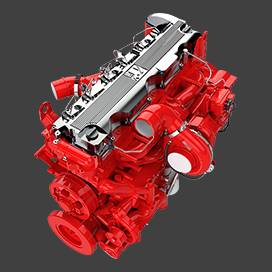Dec . 16, 2024 09:12 Back to list
Troubleshooting Tips for Stuck Brake Drum Removal Issues
Troubleshooting a Stubborn Brake Drum
Brake drums are an essential component of a vehicle's braking system, especially in older cars. They help provide the necessary friction to slow down and stop the vehicle. However, there are times when the brake drum won't come off, leading to frustration and potential safety issues. This article will explore common reasons why this happens and provide tips for effectively addressing the issue.
Understanding the Brake Drum
Before diving into solutions, it’s crucial to understand how brake drums function. Brake drums work in conjunction with brake shoes, utilizing friction to slow the vehicle's wheels. Over time, due to wear and tear, rust, or inadequate maintenance, the drum may become stuck on the axle. When it comes time to replace brake shoes or perform other maintenance, you may find yourself facing a stubborn drum.
Common Causes of Stuck Brake Drums
1. Rust and Corrosion One of the primary reasons brake drums become stuck is the accumulation of rust and corrosion. When water and road salts accumulate on the drum, they can create a strong bond between the drum and the axle, making it extremely difficult to remove.
2. Brake Shoe Expansion Sometimes, the brake shoes can expand and push against the drum due to heat or improper adjustment. This can cause the shoes to become wedged against the inner surface of the drum, preventing it from sliding off.
3. Debris Accumulation Dust, grime, and debris can accumulate around the drum and shoes. Over time, this buildup can bind the components together, leading to a situation where the drum cannot be removed without significant effort.
4. Incorrect Installation In some cases, the brake drum may have been improperly installed, leading it to fit too snugly against the hub. This situation can create challenges during removal.
brake drum won't come off

Solutions to Remove a Stubborn Brake Drum
1. Inspect and Clean Begin by visually inspecting the brake drum and area for any obvious signs of rust, debris, or damage. Use a wire brush and brake cleaner to remove any rust or dirt around the drum and the wheel hub. This can help alleviate some of the sticking issues.
2. Adjust the Brake Shoes If the shoes are too tight against the drum, you can adjust them. Look for an access hole on the backing plate and use a brake spoon or flathead screwdriver to back off the adjuster. This should reduce the tension on the shoes and allow for easier drum removal.
3. Use Penetrating Oil If rust is the issue, applying a penetrating oil can help. Spray the area where the drum meets the hub and let it sit for a while. The oil will seep into the rust and make it easier to separate the components.
4. Tap and Pull Technique Using a rubber mallet or a block of wood, gently tap around the outer edge of the drum to break any seals created by rust or debris. Ensure you are hitting it evenly to avoid warping the drum. After tapping, try pulling the drum off again.
5. Drum Puller Tool If the above methods don’t work, consider investing in a drum puller. This tool can apply even force to the drum, making it easier to remove without damaging other components.
6. Heat Application As a last resort, carefully apply heat to the drum (not the shoes) using a heat gun. The expansion from heat can sometimes break the bond between the rusted parts. Be cautious with this method, as overheating can warp the drum.
Conclusion
Dealing with a brake drum that won't come off can be a challenging experience, but understanding the underlying issues and having the right tools can simplify the process. Regular maintenance, including cleaning and inspecting brake components, can prevent many of the problems associated with stuck drums. Always prioritize safety; if you’re unsure or uncomfortable with any part of the process, consult with a professional mechanic. The braking system is vital for vehicle safety, and ensuring that all components are functioning correctly is crucial. With patience and the right approach, you can effectively resolve issues with stubborn brake drums.
-
Scania Brake Drums: OEM Quality for Optimal Safety & Durability
NewsAug.16,2025
-
R.V.I: Advanced Remote Visual Inspection for Precision
NewsAug.15,2025
-
Discover HYUNDA: Innovative Vehicles, Equipment & Solutions
NewsAug.14,2025
-
R.V.I: Unlock Advanced Insights & Real-time Performance
NewsAug.13,2025
-
Kamaz Brake Drum: Durable & Reliable for Heavy Duty Trucks
NewsAug.12,2025
-
Heavy Duty Iveco Brake Drum - Premium Quality & Safety
NewsAug.11,2025
